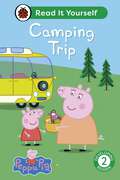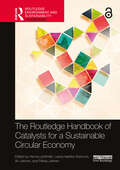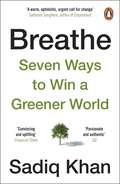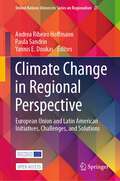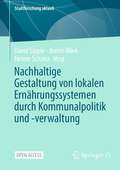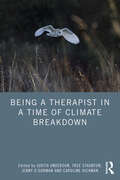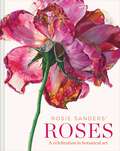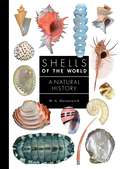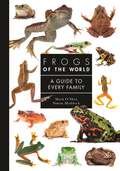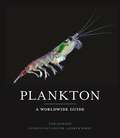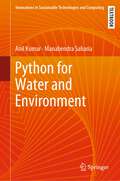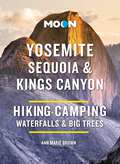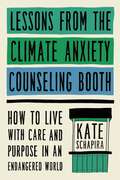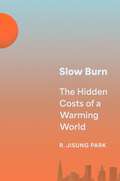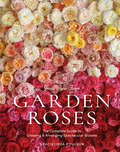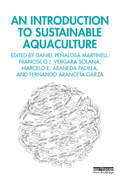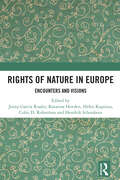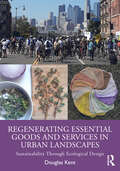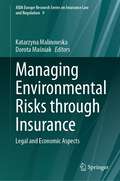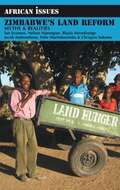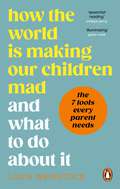- Table View
- List View
Peppa Pig Camping Trip: Read It Yourself - Level 2 Developing Reader (Read It Yourself)
by Ladybird Peppa PigBased on the award-winning children’s series! Featuring everyone’s favourite little piggy, Peppa!Hooray! Let’s go on holiday! Join Peppa and her family as they set off on a campervan adventure. With expert Daddy Pig reading the map, surely nothing can go wrong . . .?Each book has been carefully checked by educational and subject consultants and includes comprehension puzzles, book band information, and tips for helping children with their reading.With five levels to take children from first phonics to fluent reading and a wide range of different stories and topics for every interest, Read It Yourself helps children build their confidence and begin reading for pleasure.
The Routledge Handbook of Catalysts for a Sustainable Circular Economy (Routledge Environment and Sustainability Handbooks)
by Hanna Lehtimäki Leena Aarikka-Stenroos Ari Jokinen Pekka JokinenThis groundbreaking handbook leads the way in accelerating the transition to a sustainable circular economy by introducing the concept of a catalyst as a positive and enhancing driving force for sustainability. Catalysts create and maintain favourable conditions for complex systemic sustainability transition changes, and a discussion and understanding of catalysts is required to move from a linear economy to a sustainable and circular economy.With contributions from leading experts from around the globe, this volume presents theoretical insights, contextualised case studies, and participatory methodologies, which identify different catalysts, including technology, innovation, business models, management and organisation, regulation, sustainability policy, product design, and culture. The authors then show how these catalysts accelerate sustainability transitions. As a unique value to the reader, the book brings together public policy and private business perspectives to address the circular economy as a systemic change. Its theoretical and practical perspectives are coupled with real-world case studies from Finland, Italy, China, India, Nigeria, and others to provide tangible insights on catalysing the circular economy across organisational, hierarchical, and disciplinary boundaries.With its broad interdisciplinary and geographically diverse scope, this handbook will be a valuable tool for researchers, academics, and policy-makers in the fields of circular economy, sustainability transitions, environmental studies, business, and the social sciences more broadly.The Open Access version of this book, available at http://www.taylorfrancis.com, has been made available under a Creative Commons Attribution-Non Commercial-No Derivatives (CC-BY-NC-ND) 4.0 license.
Breathe: Seven Ways to Win a Greener World
by Sadiq Khan'A breath of fresh air' Observer'Passionate and authentic' GQ'Refreshing and galvanising' Vogue'Rousing and thoughtful' Independent'Quite the page-turner' Evening StandardTo win the climate war, you first need to win the climate argument.For many years, Sadiq wasn't fully aware of the dangers posed by air pollution, nor its connection with climate change. Then, aged 43, he was unexpectedly diagnosed with adult-onset asthma - brought on by the polluted London air he had been breathing for decades.Scandalised, Sadiq underwent a political transformation that would see him become one of the most prominent global politicians fighting (and winning) elections on green issues. Since becoming Mayor of London in 2016, he has declared a climate emergency, introduced the world's first Ultra-Low Emission Zone, and turned London into the first-ever 'National Park City'.Now, Sadiq draws on his experiences to reveal the seven ways environmental action gets blown off course - and how to get it back on track. Whether by building coalitions across the political spectrum, putting social justice at the heart of green politics, or showing that the climate crisis is a health crisis too, he offers a playbook for anyone - voter, activist or politician - who wants to win the argument on the environment.It will help create a world where we can all breathe again.
Climate Change in Regional Perspective: European Union and Latin American Initiatives, Challenges, and Solutions (United Nations University Series on Regionalism #27)
by Andrea Ribeiro Hoffmann Paula Sandrin Yannis E. DoukasThis Open Access book addresses climate change in Europe and Latin America from a comparative regionalism studies (CRS) perspective. Written by an international team of scholars and experts, chapters critically analyze proposals for mitigating climate change while contributing to the mutual understanding about the issues at stake across regions. The book is divided into three main sections. In the first section, authors discuss EU and Latin American cooperation, negotiations, and perspectives on climate change, exploring their agendas, the interests and key challenges at the global, regional and interregional levels. The second section focuses on the challenges to finance development and a greener economy. The third section explores new green solutions to climate change in the agriculture sector and initiatives such as nature-based solutions to climate change and best practices. Providing policy oriented solutions for combatting regional climate change at a critical juncture, this volume will be of interest to researchers and students of international relations, international law, and environmental politics, as well as public officials and climate change activists.
Nachhaltige Gestaltung von lokalen Ernährungssystemen durch Kommunalpolitik und -verwaltung (Stadtforschung aktuell)
by David Sipple Arnim Wiek Heiner SchanzDieses Open Access Buch erarbeitet konkrete Ansatzpunkte, wie die kommunale Praxis in Politik und Verwaltung Beiträge zur Ernährungswende Richtung Nachhaltigkeit leisten kann. Dabei wird u.a. aufgezeigt, dass die Aufgaben von Städten und Gemeinden, beispielsweise bei der öffentlichen Beschaffung, in Planungsfragen oder bei der Wirtschaftsförderung, bereits weit in ernährungsrelevante Bereiche hineinreichen und somit wichtige Hebelpunkte für nachhaltige Praktiken bestehen.
Being a Therapist in a Time of Climate Breakdown
by Judith Anderson Tree Staunton Jenny O’Gorman Caroline HickmanThis book introduces readers to the known psychological aspects of climate change as a pressing global concern and explores how they are relevant to current and future clinical practice.Arguing that it is vital for ecological concerns to enter the therapy room, this book calls for change from regulatory bodies, training institutes and individual practitioners. The book includes original thinking and research by practitioners from a range of perspectives, including psychodynamic, eco-systemic and integrative. It considers how our different modalities and ways of working need to be adapted to be applicable to the ecological crises. It includes Voices from people who are not practitioners about their experience including how they see the role of therapy. Chapters deal with topics from climate science, including the emotional and mental health impacts of climate breakdown, professional ethics and wider systemic understandings of current therapeutic approaches. Also discussed are the practice-based implications of becoming a climate-aware therapist, eco-psychosocial approaches and the inextricable links between the climate crises and racism, colonialism and social injustice. Being a Therapist in a Time of Climate Breakdown will enable therapists and mental health professionals across a range of modalities to engage with their own thoughts and feelings about climate breakdown and consider how it both changes and reinforces aspects of their therapeutic work.
Being a Therapist in a Time of Climate Breakdown
This book introduces readers to the known psychological aspects of climate change as a pressing global concern and explores how they are relevant to current and future clinical practice.Arguing that it is vital for ecological concerns to enter the therapy room, this book calls for change from regulatory bodies, training institutes and individual practitioners. The book includes original thinking and research by practitioners from a range of perspectives, including psychodynamic, eco-systemic and integrative. It considers how our different modalities and ways of working need to be adapted to be applicable to the ecological crises. It includes Voices from people who are not practitioners about their experience including how they see the role of therapy. Chapters deal with topics from climate science, including the emotional and mental health impacts of climate breakdown, professional ethics and wider systemic understandings of current therapeutic approaches. Also discussed are the practice-based implications of becoming a climate-aware therapist, eco-psychosocial approaches and the inextricable links between the climate crises and racism, colonialism and social injustice. Being a Therapist in a Time of Climate Breakdown will enable therapists and mental health professionals across a range of modalities to engage with their own thoughts and feelings about climate breakdown and consider how it both changes and reinforces aspects of their therapeutic work.
Rosie Sanders' Roses: A celebration in botanical art
by Rosie SandersAward-winning and hugely popular artist Rosie Sanders showcases the beauty of the rose in her follow up to Rosie Sanders Flowers. Over 80 stunning paintings and sketches are shown for the first time. The artist writes a personal letter on each of her rose paintings (to be given unopened to the final recipient or buyer of the painting). Many of these personal letters sit alongside the paintings, as they explain the creative and emotional process she went through to create it. The book is a revealing insight into the artist's muse and the author's sketches and drawings are also included to show the full artistic process. The book is introduced by an extended essay on the resonance of the rose – all across the world – in our art, literature, poetry, folklore and gardens. The rose emblem is timeless and this book not only celebrates its beauty in art but tells the story of the rose as one of nature's most powerful motifs.
Shells of the World: A Natural History (A Guide to Every Family #10)
by M. G. HarasewychA marvelously illustrated natural history of the world&’s mollusksMollusks are invertebrate animals with a remarkable natural history and a rich fossil record, and their shells are prized for their breathtaking variety and exquisite beauty. Shells of the World provides a wide-ranging look at the incredible diversity of marine mollusks. An informative introduction outlines the lineages covered, followed by a directory section, split into classes, that profiles a broad selection of different taxa to give a sense of their sheer numbers and variety.Features hundreds of beautiful color photos, depicting both the live animals and their shellsDiscusses mollusk evolution, anatomy, life cycles, behavior, and ecologyDescribes unique characteristics, distribution, habitat, and sizeProvides valuable insights into the conservation of the world&’s marine mollusksIdeal for malacologists and shell collectors everywhere
Frogs of the World: A Guide to Every Family (A Guide to Every Family #9)
by Mark O'Shea Simon MaddockA richly illustrated guide to the world&’s frogs that includes species from every familyWith more than 7,600 known species, frogs exhibit an extraordinary range of forms and behaviors, from those that produce toxins so deadly that they could kill a human many times over to those that can survive being frozen in ice. Frogs of the World is an essential guide to this astonishingly diverse group of animals. An in-depth introduction covers everything from the origins and evolution of frogs to their life cycles and defense strategies. Beautiful illustrations accompany profiles of species from each family, shedding invaluable light on the enormous range of appearance, habitats, and behavior of these marvelous creatures.Features hundreds of stunning color photographsCovers taxonomy, anatomy, locomotion, reproduction, diet, and moreDiscusses the conservation of the world&’s frogsAn invaluable resource for herpetologists, naturalists, and anyone interested in amphibians
Plankton: A Worldwide Guide
by Tom Jackson Jennifer ParkerA richly illustrated guide to the marvelously diverse plankton of the world and their fundamental role in planetary food websPlankton are the unsung heroes of planet Earth. Passive drifters through the world&’s seas, oceans, and freshwater environments, most are invisible or very small, but some are longer than a whale. They are the global ocean&’s foundation food, supporting almost all oceanic life, and they are also vitally important for land-based plants, animals, and other organisms. Plankton provides an incomparable look at these remarkable creatures, opening a window on the elegance and grace of microscopic marine life.This engaging book reveals the amazing diversity of plankton, how they belong to a wide range of living groups, and how their ecology, lifestyles, and adaptations have evolved to suit an enormous range of conditions. It looks at plankton life cycles, the different ways plankton feed and grow, and the vast range of strategies they use for reproduction. It tracks where, how, and why plankton drift through the water; shares perspectives on migrations and population explosions or &“blooms&” and why they happen; and discusses the life-sustaining role of plankton in numerous intertwined food webs throughout the world.Beautifully illustrated, Plankton sheds critical light on how global warming, pollution, diminishing resources, and overexploitation will adversely impact planktonic life, and how these effects will reverberate to every corner of our planet.
Python for Water and Environment (Innovations in Sustainable Technologies and Computing)
by Anil Kumar Manabendra SahariaThis textbook delves into the practical applications of surface and groundwater hydrology, as well as the environment. The Part I, "Practical Python for a Water and Environment Professional," guides readers through setting up a scientific computing environment and conducting exploratory data analysis and visualization using reproducible workflows. The Part II, "Statistical Modeling in Hydrology," covers regression models, time series analysis, and common hypothesis testing. The Part III, "Surface and Subsurface Water," illustrates the use of Python in understanding key concepts related to seepage, groundwater, and surface water flows. Lastly, the Part IV, "Environmental Applications," demonstrates the application of Python in the study of various contaminant transport phenomena.
Moon Yosemite, Sequoia & Kings Canyon: Hiking, Camping, Waterfalls & Big Trees (Moon National Parks Travel Guide)
by Ann Marie Brown Moon Travel GuidesExplore granite domes, thundering waterfalls, and towering trees: Moon Yosemite, Sequoia & Kings Canyon reveals the best of these stunning national parks. Inside you'll find:Flexible Itineraries: Unique and adventure-packed ideas for day hikers, winter visitors, families with kids, campers, and more The Best Hikes in Each Park: Detailed hike descriptions, individual trail maps, mileage and elevation gains, and backpacking options Experience the Outdoors: Ride the open-air tram through Yosemite Valley or hike downhill from Glacier Point past roaring waterfalls. Drive the legendary Generals Highway or take a scenic bike ride to pristine lakes (and yes, more waterfalls!). Go for a horse-drawn wagon ride on a history tour or take a rock-climbing lesson. Walk among the goliaths of Sequoia's Giant Forest and stop at a historic lodge for dinner and a well-deserved drink How to Get There: Up-to-date information on traveling between the parks, gateway towns, park entrances, park fees, and tours Where to Stay: From campgrounds and rustic lodges to the majestic Ahwahnee, find the best spots to kick back, both inside and outside the parks Planning Tips: When to go, what to pack, safety information, and how to avoid the crowds, with full-color photos and easy-to-use maps throughout Expertise and Know-How from seasoned explorer and outdoor expert Ann Marie Brown Find your adventure in Yosemite, Sequoia, and Kings Canyon national parks with Moon. Visiting more of North America's incredible national parks? Try Moon USA National Parks or Moon Death Valley National Park. Hitting the road? Try Moon Northern California Road Trips.About Moon Travel Guides: Moon was founded in 1973 to empower independent, active, and conscious travel. We prioritize local businesses, outdoor recreation, and traveling strategically and sustainably. Moon Travel Guides are written by local, expert authors with great stories to tell—and they can't wait to share their favorite places with you.
Lessons from the Climate Anxiety Counseling Booth: How to Live with Care and Purpose in an Endangered World
by Kate SchapiraClimate anxiety is real—and this practical, accessible guide helps address it on personal, relational, and structural levels, from the founder of the Climate Anxiety Counseling Booth. Summer after summer is the hottest on record. People&’s homes are flooding, burning, blowing away. We live with the loss, pain, and grief of what&’s happened, and anxiety for what might happen next, as the systems in which we live are increasingly strained. Lessons from the Climate Anxiety Counseling Booth addresses our collective concerns with empathy, grace, and practical strategies to help us all envision a viable future. By moving through your personal and general climate anxiety, frustration, helplessness and grief, you can move toward a sense of shared purpose and community care. You&’ll find actionable steps for connecting with others, identifying and activating community abundance, matching your skills with organized climate activism, and imagining a radically more livable future in order to bring it into being. Lessons from the Climate Anxiety Counseling Booth meets you where you are, not sugarcoating the realities of this growing crisis, but offering practical strategies for meeting a climate-changed present and future with emotional honesty and communal support. In 2014, when Kate Schapira first set up a Climate Anxiety Counseling booth in her hometown of Providence, Rhode Island, far fewer people were talking about climate change and its attendant anxiety, leaving those who couldn&’t ignore climate change and the forces that cause it feeling frantic and alone. Seeking a way to reach out and connect, Schapira set up a Peanuts-style "The Doctor Is In" booth to talk about climate change with her community. Ten years and over 1200 conversations later, Schapira channels all she&’s learned into an accessible, understandable, and aware guide for processing climate anxiety and connecting with others to carry out real change in your life and in your community.
Slow Burn: The Hidden Costs of a Warming World
by Robert Jisung ParkHow the subtle but significant consequences of a hotter planet have already begun—from lower test scores to higher crime rates—and how we might tackle them todayIt&’s hard not to feel anxious about the problem of climate change, especially if we think of it as an impending planetary catastrophe. In Slow Burn, R. Jisung Park encourages us to view climate change through a different lens: one that focuses less on the possibility of mass climate extinction in a theoretical future, and more on the everyday implications of climate change here and now.Drawing on a wealth of new data and cutting-edge economics, Park shows how climate change headlines often miss some of the most important costs. When wildfires blaze, what happens to people downwind of the smoke? When natural disasters destroy buildings and bridges, what happens to educational outcomes? Park explains how climate change operates as the silent accumulation of a thousand tiny conflagrations: imperceptibly elevated health risks spread across billions of people; pennies off the dollar of productivity; fewer opportunities for upward mobility.By investigating how the physical phenomenon of climate change interacts with social and economic institutions, Park illustrates how climate change already affects everyone, and may act as an amplifier of inequality. Wealthier households and corporations may adapt quickly, but, without targeted interventions, less advantaged communities may not.Viewing climate change as a slow and unequal burn comes with an important silver lining. It puts dollars and cents behind the case for aggressive emissions cuts and helps identify concrete steps that can be taken to better manage its adverse effects. We can begin to overcome our climate anxiety, Park shows us, when we begin to tackle these problems locally.
Grace Rose Farm: The Complete Guide to Growing & Arranging Spectacular Blooms
by Gracielinda PoulsonAn inspiration of roses A one-of-a-kind guide to growing, cutting, and arranging the most beautiful roses in the world, Garden Roses belongs in the hands of every flower lover. Created by Gracielinda Poulson, the preeminent rose grower in the country and proprietor of Grace Rose Farm, each page of this glorious book steeps the reader in the iconic mystique of the rose: Its breathtaking beauty, in hundreds of photographs. Its secrets, in the incredible breadth of information on the varieties best suited for cutting and how to raise them to thrive in the garden or a container, in almost any climate zone. And its unique presence in our lives, in all the ways to style and display roses, from a simple vaseful to more elaborate tablescapes and floral arches, truly elevating the flower that more than any other has captured our imaginations and delighted our eyes.
An Introduction to Sustainable Aquaculture
by Daniel Peñalosa Martinell Vergara-Solana, Francisco J Araneda Padilla, Marcelo E Fernando Aranceta GarzaThis new textbook provides an accessible introduction to sustainable aquaculture through its relationship with three key pillars: the environment, the economy, and society.As the demand for seafood keeps increasing, aquaculture is considered one of the most promising and sustainable ways to satisfy this demand with nutritious and high-quality food. It is important to understand, therefore, the wider role and impact aquaculture has on the environment, the economy, and society. The book begins by providing a foundational introduction to aquaculture and sustainability, discussing the complex and interdependent relationship that exists between the two. The core text of the book is divided into four parts which focus on the environment, economics, social impacts, and governance and technologies. Chapters examine key issues surrounding climate change, food security, new technologies, bioeconomics and risk analysis, international cooperation, employment, and animal welfare, with the book concluding with a chapter examining the future directions and challenges for the aquaculture industry. The book draws on global case studies and each chapter is accompanied by recommended reading and chapter review questions to support student learning.This book will serve as an essential guide for students of aquaculture, fisheries management, and sustainable food, as well as practitioners and policymakers engaged in sustainable fishery development.
An Introduction to Sustainable Aquaculture
by Daniel Peñalosa Martinell Francisco J. Vergara-Solana Marcelo E. Araneda Padilla Fernando Aranceta GarzaThis new textbook provides an accessible introduction to sustainable aquaculture through its relationship with three key pillars: the environment, the economy, and society.As the demand for seafood keeps increasing, aquaculture is considered one of the most promising and sustainable ways to satisfy this demand with nutritious and high-quality food. It is important to understand, therefore, the wider role and impact aquaculture has on the environment, the economy, and society. The book begins by providing a foundational introduction to aquaculture and sustainability, discussing the complex and interdependent relationship that exists between the two. The core text of the book is divided into four parts which focus on the environment, economics, social impacts, and governance and technologies. Chapters examine key issues surrounding climate change, food security, new technologies, bioeconomics and risk analysis, international cooperation, employment, and animal welfare, with the book concluding with a chapter examining the future directions and challenges for the aquaculture industry. The book draws on global case studies and each chapter is accompanied by recommended reading and chapter review questions to support student learning.This book will serve as an essential guide for students of aquaculture, fisheries management, and sustainable food, as well as practitioners and policymakers engaged in sustainable fishery development.
Rights of Nature in Europe: Encounters and Visions
by Jenny García Ruales Katarina Hovden Helen Kopnina Colin D. Robertson Hendrik SchoukensThis book addresses the recognition of the Rights of Nature (RoN) in Europe, examining their conceptualisation and implementation. RoN refers to a diverse set of legal developments that seek to redefine Nature's status within the law, gradually emerging as a novel template for environmental protection. Countries like Ecuador and New Zealand, each with distinct histories and ways of dwelling in the world, have pioneered a new era in environmental governance by legally acknowledging rights or personhood for nature, ecosystems, and more-than-human populations.In recent years, Europe has witnessed growing interest in RoN, with academic, legislative, and political initiatives gaining momentum. A significant development is the September 2022 passage of a law in the Spanish Parliament, granting legal personhood and rights to the Mar Menor, a saltwater lagoon severely affected by environmental degradation.Given the diversity in interpretations and articulations of ‘Rights of Nature’, this edited volume argues that their arrival in Europe fosters different kinds of interactions across distinct areas of law, knowledge, practices, and societal domains. The book employs a multidisciplinary approach, exploring these interactions in law and policy, anthropology, Indigenous worldviews and jurisprudence, philosophy, spiritual traditions, critical theory, animal communication, psychology, and social work.This book is tailored for scholars in law, political science, environmental studies, anthropology and cultural studies; as well as legal practitioners, NGOs, activists and policy-makers interested in ecology and environmental protection.
Rights of Nature in Europe: Encounters and Visions
This book addresses the recognition of the Rights of Nature (RoN) in Europe, examining their conceptualisation and implementation. RoN refers to a diverse set of legal developments that seek to redefine Nature's status within the law, gradually emerging as a novel template for environmental protection. Countries like Ecuador and New Zealand, each with distinct histories and ways of dwelling in the world, have pioneered a new era in environmental governance by legally acknowledging rights or personhood for nature, ecosystems, and more-than-human populations.In recent years, Europe has witnessed growing interest in RoN, with academic, legislative, and political initiatives gaining momentum. A significant development is the September 2022 passage of a law in the Spanish Parliament, granting legal personhood and rights to the Mar Menor, a saltwater lagoon severely affected by environmental degradation.Given the diversity in interpretations and articulations of ‘Rights of Nature’, this edited volume argues that their arrival in Europe fosters different kinds of interactions across distinct areas of law, knowledge, practices, and societal domains. The book employs a multidisciplinary approach, exploring these interactions in law and policy, anthropology, Indigenous worldviews and jurisprudence, philosophy, spiritual traditions, critical theory, animal communication, psychology, and social work.This book is tailored for scholars in law, political science, environmental studies, anthropology and cultural studies; as well as legal practitioners, NGOs, activists and policy-makers interested in ecology and environmental protection.
Regenerating Essential Goods and Services in Urban Landscapes: Sustainability Through Ecological Design
by Douglas KentHow do we provide for and nurture millions of people without destroying the planet in the process? Author Doug Kent, an environmental specialist, believes a vital element in the solution is recognizing that urban landscapes are an essential partner in everyone’s wellbeing. He argues that urban landscapes can and must work harder.Urban landscapes can provide part of our energy needs, help cool our buildings and public spaces, help us make the most of our precious water. They can also help combat air pollution and reduce the likelihood of allergies and asthma. They can provide landscape materials and even contribute to our timber supply. Doug also advocates turning landscapes into a food source, and/or a perfumery, pharmacy, soap shop, or craft store.Doug has over 12 years of research in this book. He has spent years doing literature reviews, and many more years concocting, consuming, crafting, distilling, propagating, retting, sawing, sowing, and weaving its many recommendations. He has also travelled the length and width of California many times to interview the people and businesses already doing this incredible work.Regenerating Essential Goods and Services is not a manifesto. It is a user’s manual. You are the creative and energetic force that will ultimately drive sustainability and regeneration. Let’s go.
Regenerating Essential Goods and Services in Urban Landscapes: Sustainability Through Ecological Design
by Douglas KentHow do we provide for and nurture millions of people without destroying the planet in the process? Author Doug Kent, an environmental specialist, believes a vital element in the solution is recognizing that urban landscapes are an essential partner in everyone’s wellbeing. He argues that urban landscapes can and must work harder.Urban landscapes can provide part of our energy needs, help cool our buildings and public spaces, help us make the most of our precious water. They can also help combat air pollution and reduce the likelihood of allergies and asthma. They can provide landscape materials and even contribute to our timber supply. Doug also advocates turning landscapes into a food source, and/or a perfumery, pharmacy, soap shop, or craft store.Doug has over 12 years of research in this book. He has spent years doing literature reviews, and many more years concocting, consuming, crafting, distilling, propagating, retting, sawing, sowing, and weaving its many recommendations. He has also travelled the length and width of California many times to interview the people and businesses already doing this incredible work.Regenerating Essential Goods and Services is not a manifesto. It is a user’s manual. You are the creative and energetic force that will ultimately drive sustainability and regeneration. Let’s go.
Managing Environmental Risks through Insurance: Legal and Economic Aspects (AIDA Europe Research Series on Insurance Law and Regulation #9)
by Katarzyna Malinowska Dorota MaśniakThis book identifies the role of insurance in a comprehensive system for managing environmental risks at the local, regional and global level. National and international legal instruments regulating environmental protection, especially aspects like pollution, are not precisely reflected in insurance concepts intended to cover environmental risks. As such, there is a need to identify environmental risks and to propose a taxonomy of environmental risks for various types of insurance coverage. The authors refer to the issues of liability in environmental protection, the scope of insurance coverage and comment on specific issues the importance of which has been noticed by the legislator or insurance practice. The book examines these issues horizontally and vertically from various standpoints, focusing on insurance as a means of managing environmental risks. In this regard, it mainly concentrates on (1) identifying and analyzing environmental risks and methods for managing them via private and public instruments, and (2) insuring these risks. The book is intended for all those interested in the field of insurance and environmental risk regimes, including lawyers, academics and legal professionals.
Zimbabwe's Land Reform: Myths & Realities (African Issues #32)
by Ian Scoones Blasio Mavedzenge Nelson Marongwe Felix Murimbarimba Chrispen Sukume Jacob Mahenehene[Amazon] Challenges the commonly held myths about Zimbabwe's land reform. Ten years after the land invasions of 2000, this book provides the first full account of the consequences of these dramatic events. This land reform overturned a century-old pattern of land use, one dominated by a small group of large-scale commercial farmers, many of whom were white. But what replaced it? This book challenges five myths through the examination of the field data from Masvingo province. [...] By challenging these myths, and suggesting alternative policy narratives, this book presents the story as it has been observed on the ground: warts and all. What comes through very strongly is the complexity, the differences, almost farm by farm: there is no single, simple story of the Zimbabwe land reform as sometimes assumed by press reports, political commentators, or indeed much academic study.
How the World is Making Our Children Mad and What to Do About It
by Louis WeinstockI know of no one better qualified to understand what young people are facing today - Philippa Perry There are epidemic rates of ADHD, depression, anxiety, self-harm and suicide in young people. The conventional medical model wants to put a plaster on the problems with medication and CBT, but we, as parents, need to dig deeper. We need to face the fact that it is not our child's fault, but the world we are bringing them up in and that we play a key role in how they see this world. Bringing together years of work helping children and the child inside us all, acclaimed psychotherapist, Louis Weinstock, will show us how. Split into two parts, and blending mindfulness, meditation and visualisation, we are taken on a journey that starts with exploring our own fears and weaknesses, and ends joyfully in practical ways we can help build confidence, courage and authentic hope about the future in our children. The power lies within each of us to create with, and for, our children a more beautiful world right now - a world where they realise their almost infinite potential.
